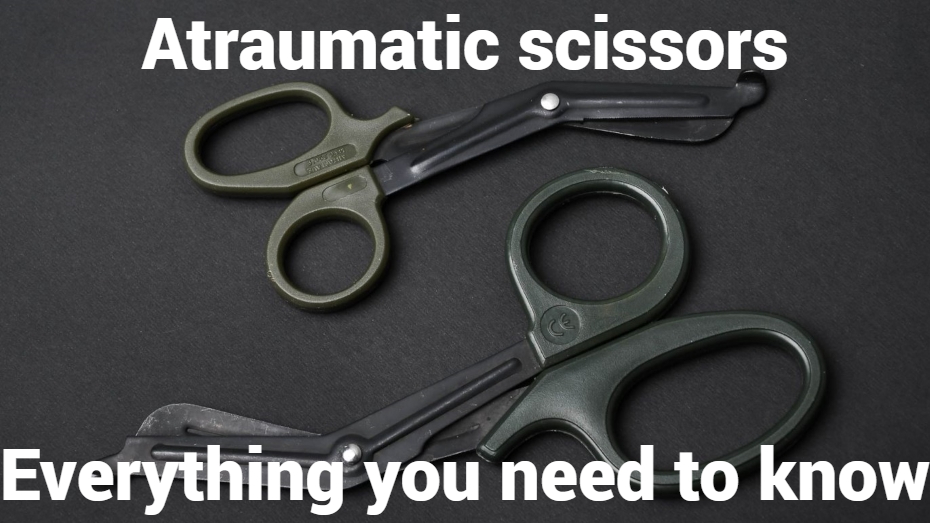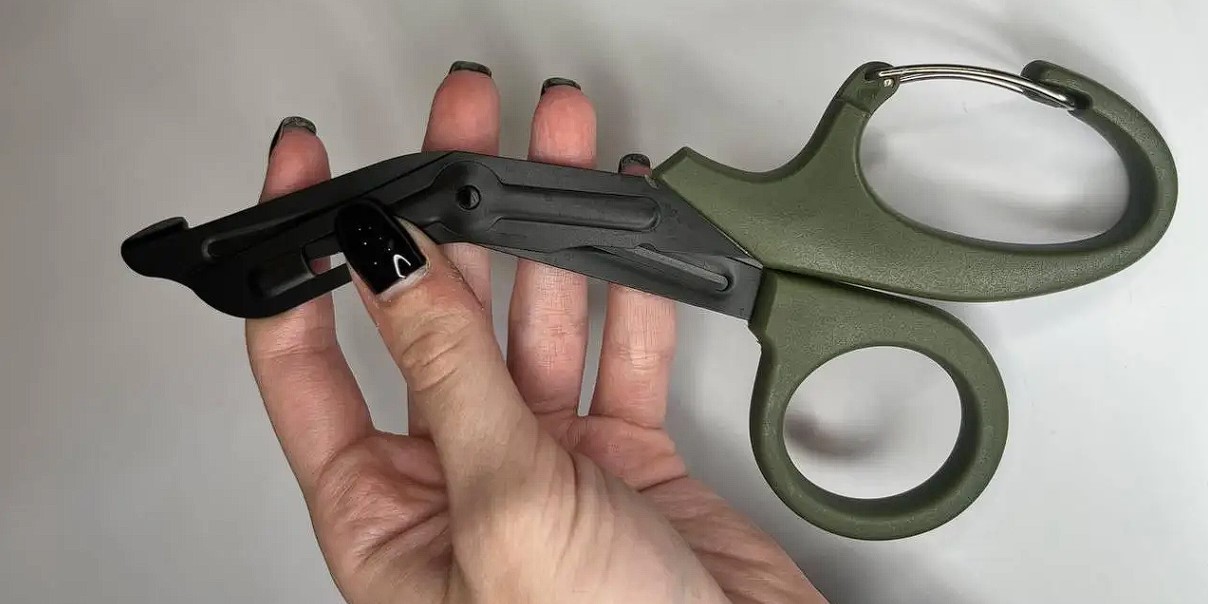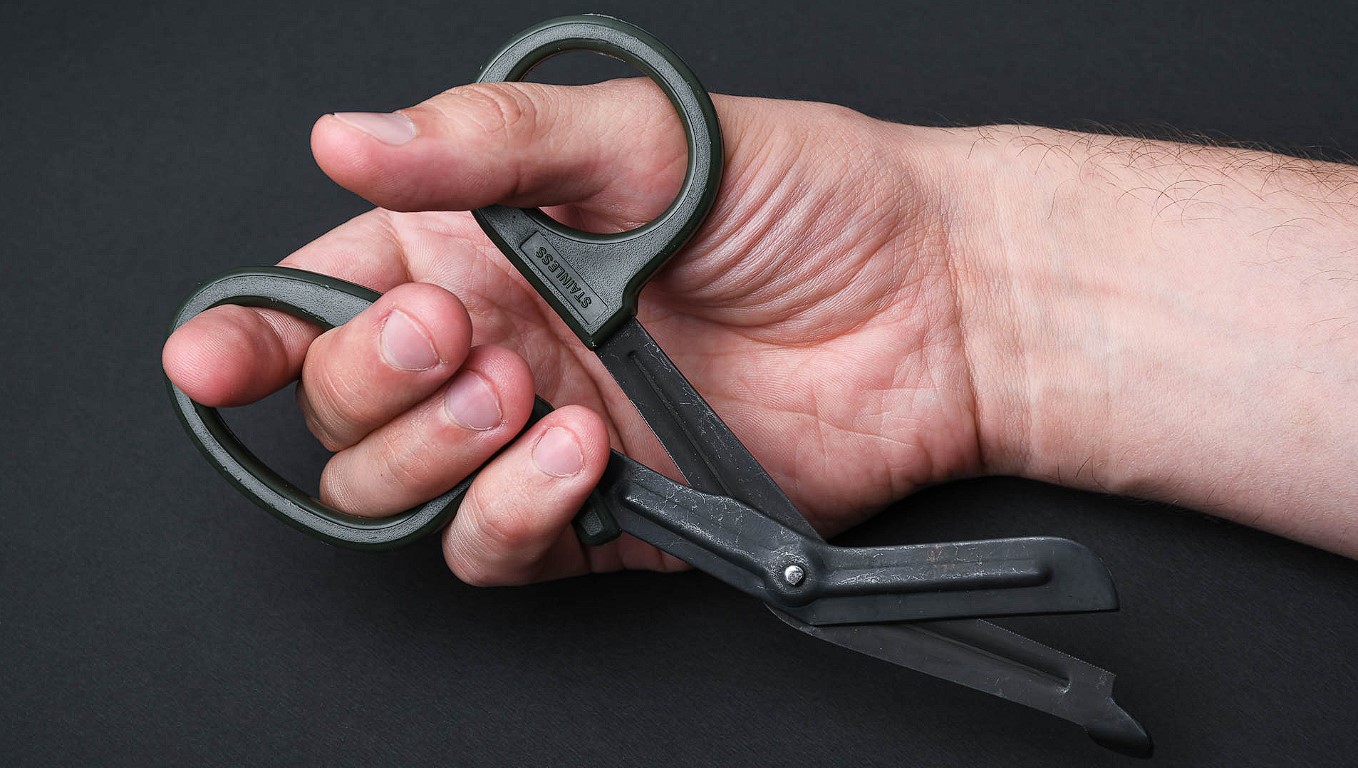Trauma-Safe Scissors
Content
- Features of Trauma-Safe Scissors
- Application of Trauma-Safe Scissors in Tactical Medicine
- How to Choose Trauma-Safe Scissors
- Material
- Size
- Additional Features
- Safety Tips for Using Trauma-Safe Scissors
- Frequently Asked Questions and Answers
- What are the main differences between atraumatic and regular medical scissors?
- What options of atraumatic scissors are available on the market, and how do I choose the one that suits my needs?
- How often should atraumatic scissors undergo maintenance to ensure their effectiveness?
- How to use atraumatic scissors in emergency situations and traumatology?
- What safety measures are important when using atraumatic scissors in medical practice?

Trauma-safe scissors are a specialized type of scissors designed for the quick and safe cutting of clothing, bandages, plaster casts, and other materials that may impede providing assistance to an injured or critical patient. Trauma-safe scissors are widely used in emergency medicine, traumatology, military medicine, and other fields where rapid and efficient access to injured body parts is necessary.
Features of Trauma-Safe Scissors
Trauma-safe scissors have certain characteristics that set them apart from regular scissors, making them more convenient and safe for use in emergency situations.
One of the blades is traditionally curved at approximately 150 degrees, providing a long lever arm and visually distinguishing them from regular scissors. The wide blunt tip on one of the blades is designed to slide over the skin, minimizing the risk of injuring the patient while cutting clothing. The scissor blades are made of durable metal that allows them to cut tough materials such as seat belts, leather, denim, even thin metal, and other hard surfaces.
The scissor handles are made of plastic or rubber, ensuring a comfortable and secure grip even in wet or bleeding conditions. The scissors have a bright color to be easily visible against clothing or other items.
Application of Trauma-Safe Scissors in Tactical Medicine
Tactical medicine is a field of medicine that deals with providing aid to the injured in conditions of combat, terrorist acts, mass accidents, and other emergencies where there is a threat to people's lives and health. In such situations, having the necessary medical equipment that allows quick and efficient first aid to the injured is crucial. Trauma-safe scissors serve the following functions:
- Cutting clothing to gain access to injured body parts, assess the patient's condition, and apply bandages, hemostatic agents, or a tourniquet.
- Cutting bandages, plaster casts, dressings, and other materials that may hinder assessing the patient's condition, changing a bandage, or removing a tourniquet.
- Cutting seat belts, leather, denim, even thin metal, and other hard surfaces that may impede extracting a patient from a vehicle, aircraft, building, or another incident site.
- Cutting other items that may be useful in emergency situations, such as packages, plastic, fabric, rope, tape, etc.
How to Choose Trauma-Safe Scissors

Trauma-safe scissors are a crucial element of medical equipment that can save the lives of the injured or critically ill patients. However, not all trauma-safe scissors are the same, and the choice depends on various factors, such as material and size.
Material
The material of the scissor blades affects their strength, sharpness, corrosion resistance, and other damage resistance. Scissor blades are typically made of stainless steel, which has high strength and corrosion resistance but may dull over time. Other materials for scissor blades include titanium, which is strong and lightweight but more expensive than steel, or tungsten carbide, which has high sharpness and wear resistance but is brittle and costly.
Size
The size of the scissors affects their comfort and effectiveness. Oversized scissors can be heavy and uncomfortable to hold, hindering maneuverability in tight spaces. Undersized scissors may lack strength and effectiveness for cutting tough materials and may easily get lost among other items. The optimal scissor size depends on personal preferences and user needs, but it typically ranges from 15 to 25 centimeters.
Additional Features
Some trauma-safe scissors have additional features that can enhance their functionality and versatility. For example, some scissors have blades with different edges, allowing them to cut various types of materials with different thicknesses and strengths. Other scissors may have a built-in saw for cutting hard surfaces such as metal, glass, wood, etc. Yet, others have extra tools like a bottle opener, keyring, pliers, knife, ruler, flashlight, etc. Additional features can be useful in various situations but may also increase the weight, size, and price of the scissors.
Safety Tips for Using Trauma-Safe Scissors

Trauma-safe scissors are a safe and effective tool for cutting clothing, bandages, and other materials that may impede providing assistance to an injured or patient. However, like any other tool, trauma-safe scissors require adherence to specific safety rules when using them, including:
- Do not use tactical scissors to cut electrical cables, batteries, gas cylinders, or other items that may cause electric shock, explosion, or fire.
- Do not use scissors to cut items that may cause the dispersion or flying of shards, such as glass, ceramics, stone, etc. Use protective goggles and gloves to prevent eye or hand injuries.
- Do not use scissors to cut items that may be contaminated with blood, saliva, urine, waste, or other biological substances. Use protective masks, gloves, and clothing to prevent infection or contamination.
- Do not use scissors to cut items that may be hot, cold, acidic, alkaline, or contain other chemicals. Use protective gloves, goggles, and clothing to prevent burns, frostbite, irritation, or poisoning.
- Do not use scissors to cut items that may be magnetic, radioactive, electronic, or other technological devices. Use special tools to cut such items or refrain from using them altogether.
- Do not leave scissors unattended, especially in the presence of children, animals, or other individuals who may misuse them or cause injury to themselves or others. Store scissors in a safe place where they will not fall, slip, or get damaged.
- Clean and disinfect scissors after each use to remove any residue of materials, dirt, blood, or other substances. Use soap, water, alcohol, or other cleaning and disinfecting agents, and follow the manufacturer's instructions for scissors care.
- Sharpen and repair scissors as needed to maintain their sharpness, strength, and functionality. Use special tools for sharpening and repairing scissors, or consult a qualified professional or the manufacturer if the scissors require significant repair or replacement.
- Use tactical scissors only for their intended purposes; do not substitute them for other tools such as a knife, saw, pliers, etc.
- Exercise caution when working with scissors; do not point them at yourself or others, avoid sudden movements, and do not leave them open.
Trauma shears are an indispensable tool for providing assistance to the injured or critically ill patients. They allow for a quick and safe cutting of clothing, bandages, and other materials that may hinder access to damaged areas of the body, as well as cutting other items that may be useful in emergency situations.
This is a tool that can save lives, so it is important to have them on hand in any situation where first aid is needed.
Frequently Asked Questions and Answers
What are the main differences between atraumatic and regular medical scissors?
Atraumatic scissors are specially designed for medical procedures and feature rounded tips, reducing the risk of skin and tissue damage. They are ideal for safe use in medical conditions.
What options of atraumatic scissors are available on the market, and how do I choose the one that suits my needs?
There are various models of atraumatic scissors on the market, including different sizes and functional capabilities. When choosing, consider the specific requirements of your medical practice and ease of use.
How often should atraumatic scissors undergo maintenance to ensure their effectiveness?
Regular maintenance of atraumatic scissors includes lubricating mechanisms and checking for any damage. This is important to ensure proper functionality and the longevity of the tool.
How to use atraumatic scissors in emergency situations and traumatology?
Atraumatic scissors are often used for quick and safe cutting of a patient's clothing in emergency situations, such as when receiving injured patients.
What safety measures are important when using atraumatic scissors in medical practice?
Always adhere to safety rules when using atraumatic scissors, including proper storage, thorough cleaning, and sterilization, as well as the use of personal protective equipment for medical personnel.
